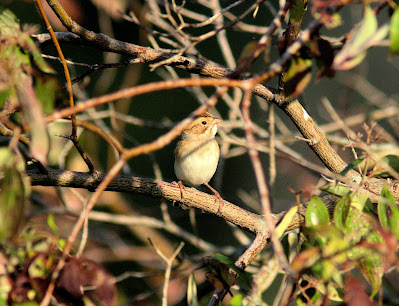Today I took a long drive and checked out West Perth Wetlands at Mitchell. It is a premier site for attracting and viewing shorebirds.
I usually head up there once in August each year, but nothing of note had been reported. I also stop by there on my trips north (usually coming home) for a break from driving. Last year in September, a Barnacle Goose was present and I managed to see that on my way back from Algonquin Park. I wondered about its origin, but I see that it was accepted by the OBRC.
Anyway, I noted that yesterday a large number of shorebirds were reported at West Perth, so I thought today was a good time to head up there. It was a nice drive as virtually no traffic on the roads!
Indeed there were lots of shorebirds. I estimated at least 190 Lesser Yellowlegs, plus some Greaters (and probably some Mediums too!).
A scope is defintely required here, as most shorebirds are distant.
A Red-necked Phalarope was reported recently, and I managed to spot it at the far side of the one cell.
Later, it came a little closer. It was a new bird for my list there.
A couple of White-rumped Sandpipers were mixed in as well, but too distant to photograph.
Nothing really rare today, but nice to sort through so many shorebirds.
Shortly before I left, a Great Egret flew over.
My best shorebird there was a Marbled Godwit, seen a number of years ago in September.
Looks like Kettle Point was the place to be today with an incredible number of jaegers! I am not really interested in standing in one spot these days. I was happy with my observations for today.
The last couple of days I have done some wandering around. I have no luck in finding anything spectacular though! Usually I am in the right place at the wrong time, or in the wrong place at the right time, lol.
Saturday, I encountered a Clay-colored Sparrow at Keith McLean C. L. We do not often see them around here in the fall migration.
Sunday, one of my stops was Moore WMA. A few warblers were present, but I was once again looking at mussels. No new species though, but more were exposed as the water levels dropped.
 |
| Pink Heelsplitter |











No comments:
Post a Comment